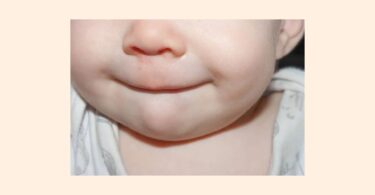This patient had been admitted in our ward in the year 1993, when I saw her. Interesting to this case besides the remedy choice in an acute emergency, was the difficulty experienced in management and how it was handled from the philosophical standpoint.
A girl, a child of 5 years, was brought to us in a STATUS EPILEPTICUS. She was not responding to her anti-epileptic drugs even in the maximum therapeutic oral dosage. She had been diagnosed with Organic Epilepsy secondary to intracellular cerebral damage of unknown etiology. This was based on scan findings of infarcts in the midbrain and pontine regions. Now, presenting with status epilepticus she had developed acute infarcts on an underlying chronic structural damage in the brain stem. She was frequently evaluated by the attending MD physician.
The clinical presentation observed at the time of admission: The body was cold all over; cyanosed; pupils with horizontal nystagmus; unconscious (non responsive to pain). She was having frequent seizures that worsened the cyanosis. The seizures were 30 – 60 minutes in duration, at 30 minute intervals. She had a chronic spasticity of the limbs that had increased with the present state.
We obtained a brief history as follows: The seizures had been progressively worsening since the time they started, at the age of 6 months. They had almost a fortnightly cycle starting with high fever, clonic tonic convulsions beginning in fingers, and toes that usually spread all over with coldness of the body. The child would become weak, prostrated and more recently unconscious for long hours after convulsions.
All her milestones were late by almost one year. Speech had developed only to the extent of being able to make unintelligible sounds. These difficulties were attributed to the mental retardation which was part of the pathology of the organic epilepsy.
The patient was allowing herself to be covered without protest; she liked wearing a sweater in the Bombay winter. Hence we concluded that she was a chilly patient.
Here are the rubrics to consider:
- Mind; UNCONSCIOUSNESS, coma; General; convulsions; after
- Generalities; WEAKNESS; Convulsions; after
- Extremities; CONVULSIONS, spasms; Epileptic aura; toes
- Extremities; CONVULSIONS, spasms; Epileptic aura; upper limbs; fingers
- Clinical; CYANOSIS
The clinical picture and diagnosis of these convulsions, was a Jacksonian March Seizure. This diagnosis delivers the individuality of the indicated homeopathic remedy depending on the point of onset of the seizures followed by the progressive involvement of various parts of the body. In this case they started in the fingers and toes and spread all over the body. Along with the resultant cyanosis and general state following the convulsions, the obvious homeopathically indicated remedy was Cuprum Met. Considering the acuteness of the situation, she was given Cup Met starting with higher potencies, from 30C progressively going up to 10m. But they gave a very short lasting amelioration in the seizures even though the remedy was repeated every half an hour.
Initially we considered a miasmatic block to the action of Cuprum Met, so we interpolated a dose Tub bov 200 but it did not help either. The choice of Tub was based on clinical observations in the Materia Medica.
HC Allen’s ‘Keynotes’ on Tuberculinum states, “When with a family history of tubercular affections the best selected remedy fails to relieve or permanently improve, without reference to name of disease.”
Hence it was expected to support the indicated remedy as an anti-miasmatic force. But this did not help her response to Cuprum Met at this stage either.
The child was continuing to deteriorate and was developing increased spasticity of the limbs with extra-pyramidal signs. There was a fear that this would result in further brain stem infarcts. In order to buy some time, she was even given injectable anti-epileptics on the advise of the attending MD physician. But there was no response.
We then considered basing our prescription on the pathology of infarcts and the exhausted state with continuous seizures. Zincum Met was prescribed, but it did not help either.
Finally, we reviewed the posology taking into consideration the structural intra-cerebral damage that the case was diagnosed with. We realized from a philosophical standpoint that her susceptibility would be very poor given the structural damage. We had also observed that the 10m was much less effective than the 1M during initial dosing. Hence we decided to go down to Cuprum Met 6C.
Within 48 hours of the remedy, repeated 2 hourly, the continuous seizures stopped! After 18 hours there were no more seizures, though some choreiform movements continued. After 3 days these choreiform movements too reduced. A dose of antimiasmatic Tub Bov 200 as inter-current was given at this point. This time around, the improvement in this symptom was speeded up due to the antimiasmatic remedy. She had remained unconscious through all of this, now her consciousness returned.
At this stage Tuberculinum was indicated as an anti-Tubercular (miasmatic) force in order to enhance the action of Cup Met as there was an exhausted general state, hyperactive CNS with progressive damage indicating the tubercular miasm. She remained as an in – patient for about a month. But she went home fully conscious, with reduced limb spasticity and no convulsions and Cuprum Met 6C on a 4 hourly dosage.
In subsequent follow-ups, we found Cuprum Met on its own was not adequate. There was a frequent tendency to relapse she would have convulsions once every 15 days. Even with Tub bov 200 fortnightly, the case would not hold. Hence Tub bov 200 had to be given on alternate days at bed time while Cup Met 6C was repeated 2 hourly. On this dosage, the child now had a convulsion free period for up to 2 months at a time. This was with simultaneous improvement in the general condition as well in terms of increased responsiveness, reduced debility, and progressive improvement of neurological aspects – spasticity and tone. Motor milestones improved as well – now she could play on her own, sitting at one place. Then all anti-epileptics that she had been on from infancy had been withdrawn slowly over this period.
The next episode of convulsions occurred after she had been taken off the Tub bov 200 for 2-3 weeks. It was required then to increase the potency of Cup met to 7C for about 8-9 months. The exacerbation promptly responded and convulsions reduced completely. Over time she improved so much that she was able to even speak a few words. Her case was reviewed for a constitutional after about 7-8 months on Cuprum Met, and Silica was the chronic remedy given to her.
The constitutional treatment is another case study. Here we wanted to concentrate on the acute emergency and its homeopathic management.
Dr. Praful M Barvalia, MD(Hom)
Shalibhadra Society
148, Hingwala Lane Extention
Near Popular Hotel
Ghatkoper (East)
Mumbai 400077
Ph: 91-22 – 2516 5985
91-22 – 2513 4467
Email: [email protected]
[email protected]
Website: www.holisticfoundation.org
For more about epilepsy visit;





My son is suffering from epilepsy, can you help in this regards ?